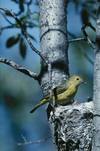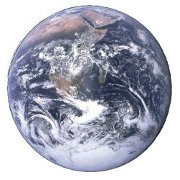
Custom Search
Animals in Clipperton Island
Clipperton Island is a small, uninhabited island in the eastern Pacific Ocean. It is about 3.5 square miles, about nine square kilometers. The island has patches of grass scattered around the island and some coconut palm trees, but it is largely barren. It has not been habited since 1945, but is visited by fishermen, French Navy personnel, scientists, film crews, and those who shipwreck on the island.
Due to the lack of vegetation, very few animals live on Clipperton Island. A bright orange crab inhabits the island, but is is poisonous to eat. Several bird species including Masked Bobbies, Sooty Terns, White Sterns, Brown Bobbies, Black Noddies, Brown Noddies, Greater Firgates, Coots, Cuckoos,
Sooty Terns, White Sterns, Brown Bobbies, Black Noddies, Brown Noddies, Greater Firgates, Coots, Cuckoos,  Yellow Warblers, and Martins inhabit the island. Some travelers report seeing ducks in the island's lagoon. The lagoon contains millions of isopods, which can cause very painful stings for swimmers. Lizards and rats are also abundant on the island.
Yellow Warblers, and Martins inhabit the island. Some travelers report seeing ducks in the island's lagoon. The lagoon contains millions of isopods, which can cause very painful stings for swimmers. Lizards and rats are also abundant on the island.
The rats on the island seem to have come from travelers and shipwrecked ships. In 2006, the Southwest Fisheries Science Center in California noticed that the increased rat population is causing a decline in both the bird and crab populations. This is causing more vegetation and coconut palms to grow on the island. The Center is recommending that all rats be evacuated from the island. Hopefully, this will help the island return to how it was before humans began to alter the delicate ecosystem of the island.
Clipperton Island does not have a large animal population. The native animals are in danger from rats brought by humans and their ships. Eliminating the rat problem should start to return the island to it's previous habitat for the native animals. Several species of birds and lizards inhabit the island along with the rats, isopods, and crabs.
Due to the lack of vegetation, very few animals live on Clipperton Island. A bright orange crab inhabits the island, but is is poisonous to eat. Several bird species including Masked Bobbies,


The rats on the island seem to have come from travelers and shipwrecked ships. In 2006, the Southwest Fisheries Science Center in California noticed that the increased rat population is causing a decline in both the bird and crab populations. This is causing more vegetation and coconut palms to grow on the island. The Center is recommending that all rats be evacuated from the island. Hopefully, this will help the island return to how it was before humans began to alter the delicate ecosystem of the island.
Clipperton Island does not have a large animal population. The native animals are in danger from rats brought by humans and their ships. Eliminating the rat problem should start to return the island to it's previous habitat for the native animals. Several species of birds and lizards inhabit the island along with the rats, isopods, and crabs.
 Information about the animals living in Clipperton Island is brought to you by "List of countries of the world", your first stop in discovering all countries and animals of the world.
Information about the animals living in Clipperton Island is brought to you by "List of countries of the world", your first stop in discovering all countries and animals of the world.The animals displayed on this page are grouped in their scientific order. View also countries of the world ordered by:
- List of TLD's
- Country dialling codes
- Population
- Kilometers of coastline
- Square kilometers of land
- Square kilometers of water
- Birth rate
- Death rate
- Irrigated land
- Countries starting with A
Privacy policy